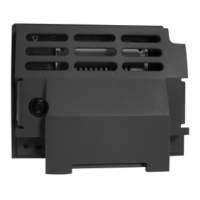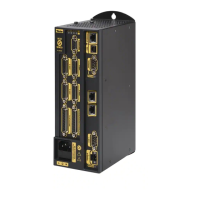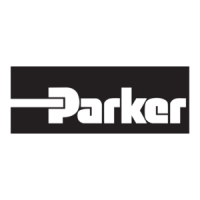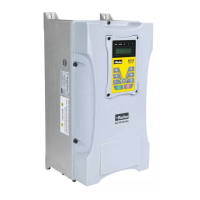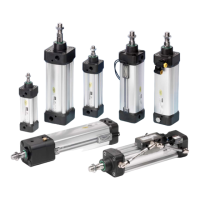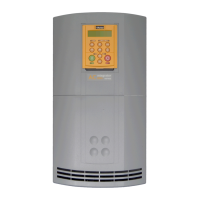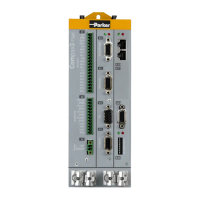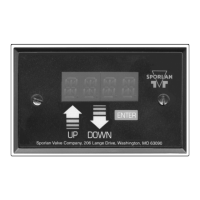Parker Hannifin
DAC Parameter/DAC number 0 1 … 31
DAC Output Value P33280 P33296 … P33776
Reserved P33281 P33297 … P33777
DAC Gain P33282 P33298 … P33778
DAC Offset P33283 P33299 … P33779
Reserved P33284 P33300 … P33780
Reserved P33285 P33301 … P33781
Reserved P33286 P33302 … P33782
Reserved P33287 P33303 … P33783
ADC Parameter/ADC number 0 1 … 31
ADC Input Value P33288 P33304 … P33784
Reserved P33289 P33305 … P33785
ADC Gain P33290 P33306 … P33786
ADC Offset P33291 P33307 … P33787
Reserved P33292 P33308 … P33788
Reserved P33293 P33309 … P33789
Reserved P33294 P33310 … P33790
Reserved P33295 P33311 … P33791
These tables appear similar to the other parameter tables for ACR
DACs and ADC’s, but there is no relationship in function. Nor do the
other DAC and ADC commands have any function for ACR9000
extended analog I/O. The DAC commands assume their use as
command outputs for drives, and ACR9000 does not have the type
of ADCs that are assumed by other ADC commands.
Saved Parameters
All the parameters required to set up the extended I/O network are
saved with the ESAVE command, and automatically recalled on
power up. In addition, some of the parameters determined by the
controller, such as the total number of analog and digital I/O, are
also saved with the ESAVE command. This allows an application to
compare the total I/O expected before the network is started with
the actual amount found when the network is started. The exact
parameters saved and recalled are P32768 through P32778, the
node IDs for each node, and the gains and offsets for all DAC and
ADC parameter blocks of each node.
Example 1
The following example uses two Parker I/O nodes. The first,
configured as node 3, has a PIO-337, four digital inputs, four digital
outputs, four analog inputs (0 to 10 VDC) and two analog outputs (0
to 10 VDC). The second, configured as node 4, has a PIO-347, four
digital inputs, four digital outputs, four analog inputs (0 to 10 VDC)
Additional Features 139
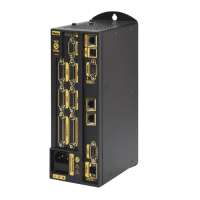
